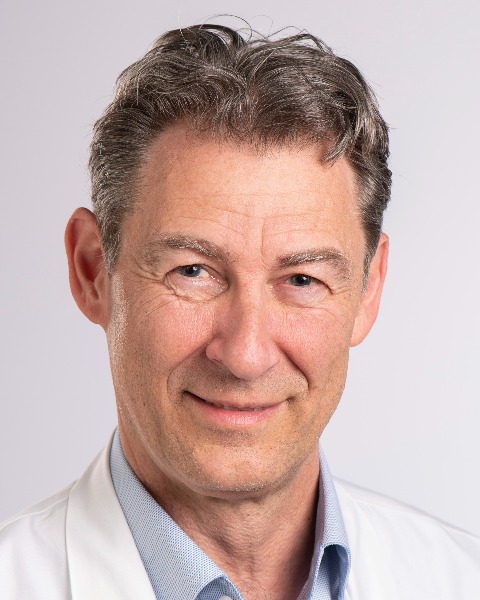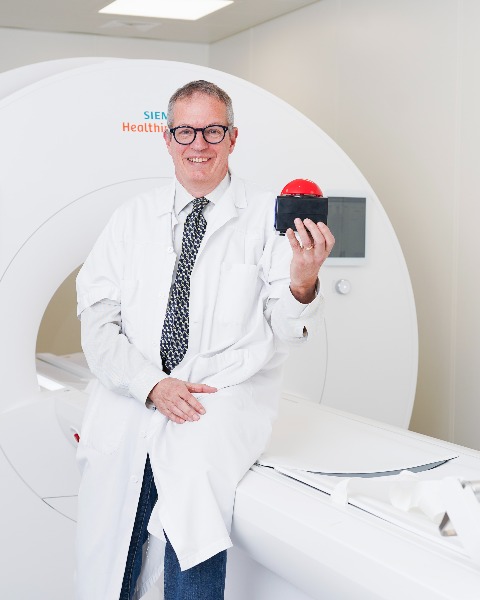Rapid Fire Abstracts
Myocardial scar detection in patients with implantable cardiac devices combining free-breathing wideband black-blood late gadolinium enhancement imaging with motion-correction (RF_FR_427)
- PG
Pauline Gut, MSc
PhD student
University Hospital (CHUV) and University of Lausanne (UNIL), Switzerland - PG
Pauline Gut, MSc
PhD student
University Hospital (CHUV) and University of Lausanne (UNIL), Switzerland - HC
Hubert Cochet, MD, PhD
Professor
Department of Cardiovascular Imaging, Hôpital Cardiologique du Haut-Lévêque, CHU de Bordeaux, France - PA
Panagiotis Antiochos, MD
Cardiologist
Cardiac MR Center of the University Hospital Lausanne, CHUV, Switzerland, Switzerland - bd
baptiste durand, MD, PhD
Radiologist
Department of Cardiovascular Imaging, Hôpital Cardiologique du Haut-Lévêque, CHU de Bordeaux, Avenue de Magellan, 33604 Pessac, France, France - KN
Kalvin Narceau, MSc
Research Engineer
Bordeaux University - INSERM U1045, France - AM
Ambra Masi, MD
Cardiologist
University Hospital (CHUV) and University of Lausanne (UNIL), Switzerland 
Juerg Schwitter, MD, PhD
Professor
University Hospital and University of Lausanne, Switzerland- FS
Frederic Sacher, MD, PhD
Professor
Department of Cardiovascular Imaging, Hôpital Cardiologique du Haut-Lévêque, CHU de Bordeaux, France - PJ
Pierre Jaïs, MD, PhD
PROF/PhD
Hôpital Cardiologique du Haut-Lévêque, CHU de Bordeaux, France 
Mathias Stuber, PhD
Full Professor
CIBM-CHUV-UNIL
Laussane University, Switzerland
Aurelien Bustin, PhD
Assistant Professor
IHU LIRYC, France
Presenting Author(s)
Primary Author(s)
Co-Author(s)
Wideband phase-sensitive inversion recovery (PSIR) late gadolinium enhancement (LGE) imaging1 in patients with cardiac implantable electronic devices (CIED) successfully suppresses CIED-related artifacts obscuring the myocardium on images. However, PSIR LGE still faces challenges due to poor scar-blood contrast, which complicates the depiction of subendocardial scars2. To address these issues2 and to overcome the limitations of breath-hold imaging, we propose a 2D wideband black-blood (BB) LGE sequence, incorporating wideband inversion recovery and T2 preparation with non-rigid motion correction (MOCO) reconstruction.
Methods:
Data: A cohort of 15 CIED patients (3 female, age 59 ± 17y), with known or suspected cardiomyopathies underwent CMR at 1.5T (MAGNETOM Sola, Siemens) with slow infusion of gadobutrol contrast (bolus of 0.01 mmol/kg, total of 0.2 mmol/kg).
Acquisition: A wideband inversion pulse (spectral bandwidth=3.8kHz, pulse duration=10.24ms)1 and a wideband T2-prep module (spectral bandwidth=5kHz, pulse duration=27ms)3 were implemented into the free-breathing wideband BB sequence (Fig1). Eight single-shot co-registered short-axis images were acquired sequentially during mid-diastole, every two heartbeats. The sequence was compared with conventional and wideband breath-held PSIR and BB techniques.
Reconstruction: The single-shot BB images were reconstructed with GRAPPA, followed by shot-to-shot 2D non-rigid registration performed with Horn-Schunck optical flow4 (regularization λ=0.005). This process was then followed by image averaging. Reconstruction times were recorded.
Analysis: Image entropy (the lower the better) and image sharpness (normalized gradient squared, the higher the better)5 were computed on the BB images, and a Bland-Altman analysis was performed. Image quality, CIED artifact severity, LGE extent, and diagnostic confidence in scar extent were assessed by two expert radiologists.
Results:
Wideband MOCO BB datasets were reconstructed in about 1.5±0.4s per slice. After MOCO (Fig2), image entropy was significantly lower (P< 0.01, 95% CI: 0.08, 0.11) and image sharpness was significantly higher (P< 0.01, 95% CI; -0.0024, -0.0003). Comparing free-breathing to breath-holding imaging, image entropy (P=1.000, 95% CI: -0.005, 0.009) and image sharpness (P=0.128, 95% CI: -0.0005, -0.0000) were similar, with a good agreement and no bias.
Image quality and CIED artifact severity scores of wideband MOCO BB images were excellent and comparable to that of wideband PSIR (image quality, P=1, 95% CI: -0.75, 0.25; artifact, P=0.37, 95% CI: - 0.75, 0.00). All patients with myocardial scars were confidently diagnosed with wideband MOCO BB, compared to only 50% with wideband PSIR (P< 0.05). Wideband MOCO BB also identified more LGE scar segments (median: 2.50, IQR: 0.25, 3.50) than wideband PSIR (median: 2.25, IQR: 0.00, 3.00) (P=1, 95% CI: 0.00, 1.99).
Conclusion:
Free-breathing wideband T2-prepared BB LGE imaging with MOCO showed strong concordance with breath-held wideband PSIR, while providing superior scar detection and assessment, offering a promising diagnostic tool for evaluating myocardial scars in patients with CIEDs.

